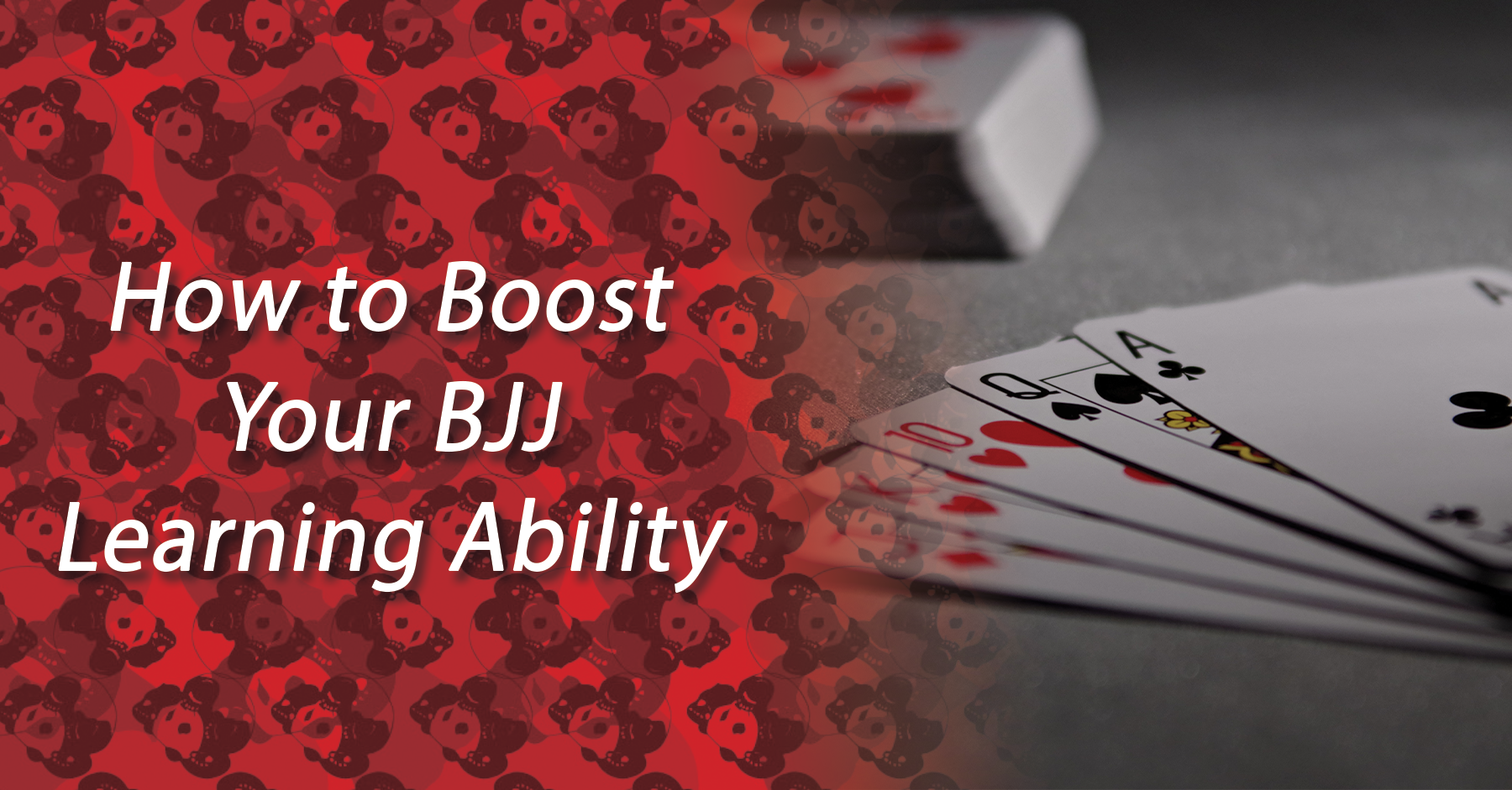
How to Boost Your BJJ Learning Ability
Most of us will never be world-class competitors. But we’re still ravenous for jiu-jitsu – especially after months of deprivation. For many jiu-jitsu hobbyists, what stokes the drive to excel is a love of learning.
Jiu-Jitsu is the ideal martial art for learning addicts. It’s a game that alluringly combines skill and luck. I’ve heard many compare it to chess. But to borrow an idea from Annie Duke’s book, Thinking in Bets, jiu-jitsu is more like poker. Like in poker, our training partner’s metaphorical cards (their strategies and techniques) are face-down. We don’t know how they will play their hand. We don’t know how they will modify their tactics as the match unfolds.
In chess, our opponent’s pieces are laid out before us. Losing is often due to a technical blunder and has little to do with luck. The better chess player usually wins. The same can’t be said for jiu-jitsu, where we may lose our footing on a slick mat, or a ref misses a point or an advantage, costing us the match. These elements combine to make jiu-jitsu more true-to-life, and life is the meta game. Combine all of these elements with a high-repetition structure, and you have a learning addict’s dream. Every moment of a jiu-jitsu class or match is potentially educational.
So, what are we learning, and how can we learn more effectively?
On the surface, we’re learning a practical martial art. But there are meta lessons, too.
Jiu-Jitsu requires vulnerability
There’s presence, or being attuned to the moment. Your mind wanders, and you get choked out. There’s resilience, or the grit to dig in when we hit setbacks. You return to the mats the day after getting your ass kicked in a comp. And internal locus of control, or enforcing our will and strategy. You make your opponent play your game instead of playing theirs.
Likely, you’ll recognize all of these principles in your own game. But I’d like to call attention to one principle that’s likely overlooked: Vulnerability. Jiu-Jitsu can teach us how to be vulnerable. Vulnerability is also why so many of us suck at learning.
Merriam-Webster defines vulnerability as “the quality or state of having little resistance to some outside agent.” Surrender. Acceptance. Being open to the possibility of defeat. Losing on points. Tapping out.
The western lifestyle, for the most part, does not reward vulnerability, but perfection. Unfortunately, the desire to be perceived as perfect obstructs learning, creating a paradox: We want perfect jiu-jitsu, but we can’t get there because the process requires vulnerability and imperfection.
Losing and learning well
You’ve rolled with someone who can’t be vulnerable. Maybe they spam you with an ineffective knee-cut pass or choke to chew up the clock. Maybe they spend 5 minutes of a 6-minute round in turtle because they can’t bear the thought of surrendering points. Or, they use brute force to pry off the well-executed choke of a smaller opponent. The people I’ve just described may stop the pass, keep points off the board, or escape the choke, but they’ve learned nothing.
In jiu-jitsu, vulnerability looks a lot like losing. And learning to invest in losing is difficult to integrate. Five years into the game, and I’m only just beginning to do it.
Committing to vulnerability
Jiu-Jitsu excels at training vulnerability if and only if you commit to it. It won’t happen otherwise. At least that’s been my experience. I’ll give you an example.
There’s a skilled blue belt in my gym who developed an airtight foot lock game. For months, I fought it stupidly. I felt him set it up and resisted with all of the muscle I could muster. I didn’t want the embarrassment of tapping to a blue belt and I just ended up tapping faster because of the extra tension I used. Ego prevented me from being vulnerable. It stopped me from learning how to deal with the position.
The favor of defeat
Then I modified my approach. I swallowed my pride and I started walking into it. Understanding it. Not caring about the outcome so much as being present to the subtleties of the position and the attacks. I started find ways around the attacks, find the way back to my game. I’d like to tell you I have it all figured out now, but does anybody? I know that when the mats reopen, with enough deliberate practice, I’ll know more about stopping it. Had I not embraced vulnerability, I’d still be mystified.
One of the last times I trained, a brown belt saw me get caught in this blue belt’s Estima lock.
Oh, no! He caught you with that again!, he called out from across the mat.
I’m not sure if he was trying to make me feel bad, better, or some combination of both.
He’s doing me a favor, I said.
Training vulnerability through jiu-jitsu looks different for each grappler. You need to construct the approach that will benefit you most. But I can tell you where to begin. Next time you can safely train, pick the training partner who has your number. Give them about 50-75% of your resistance. Let them work their A game on you. Notice what they do – every subtle detail. Notice when you feel the most frustrated, angry, despondent. This is the position, sweep, movement, attack that you need to begin breaking down.
Be vulnerable to it. Work from there. Every tap is an investment.
Joe Hannan is a consultant, writer, and purple belt at Princeton Brazilian Jiu-Jitsu. You can see more of what he’s up to here or follow him here.
Other articles:
Quick links
Contact us
About us
Quality BJJ gear at fair prices, available all year. Founded in 2012 to provide an alternative to high-cost, limited edition gis. Dive into the BJJ lifestyle with us—join the Panda Nation!"
